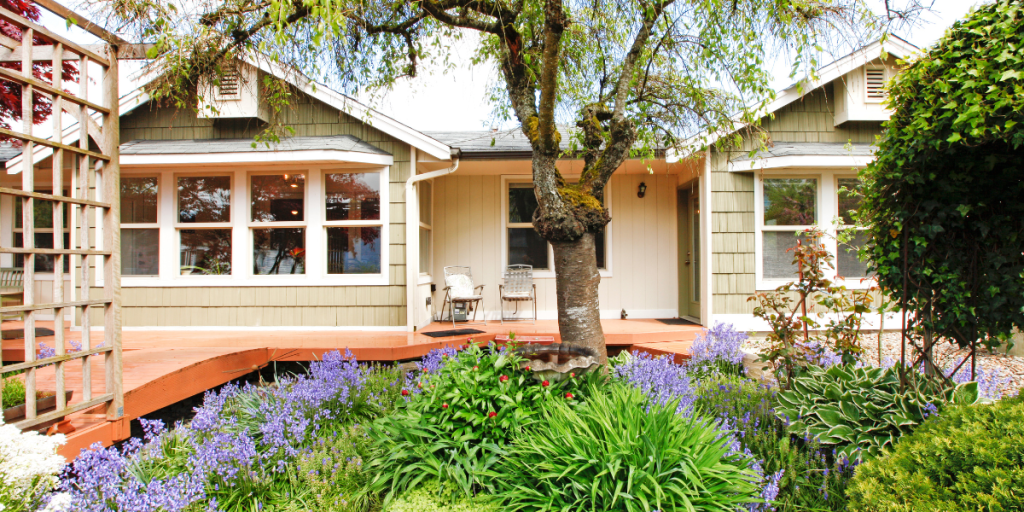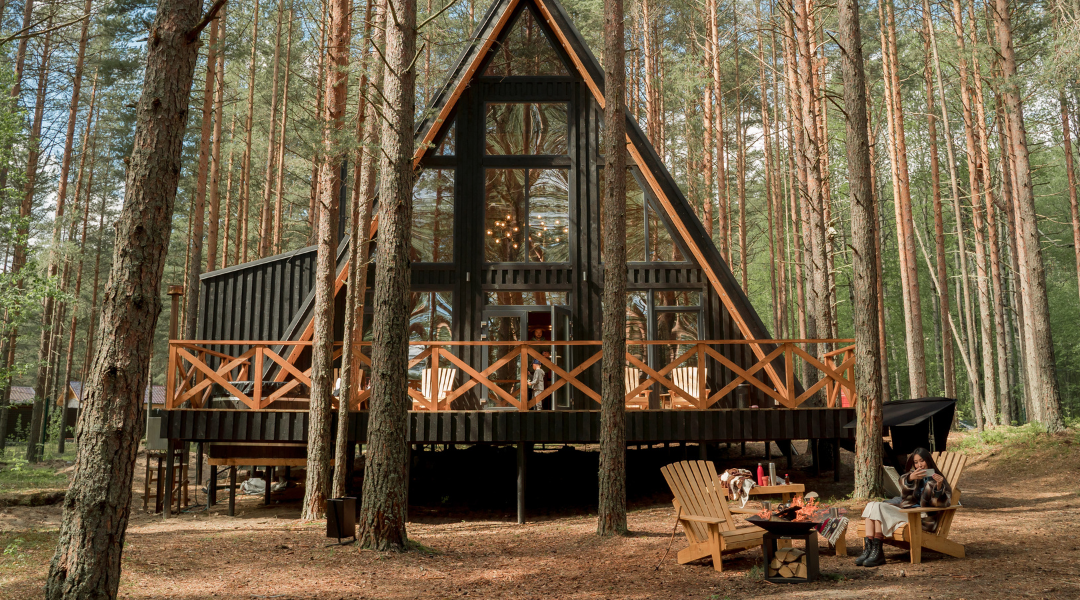Green Assets: Unveiling the Economic Power of Trees for Property Value and Energy Efficiency
Trees play a crucial role in urban landscapes in enhancing property value and energy efficiency. Like pillars of strength and vitality, these arboreal entities bestow shade and cooling benefits upon their surroundings. Beyond their functional utility, they contribute to neighborhoods’ beautification and aesthetic appeal.
Furthermore, trees act as natural windbreaks, insulating properties from harsh weather conditions. Additionally, they provide environmental benefits by purifying the air and mitigating climate change effects.
Lastly, trees foster community cohesion and social well-being through their presence. This article explores the economic value of trees through an objective lens, analyzing their various contributions to property value enhancement and energy efficiency while substantiating claims with empirical evidence.
Shade and Cooling Benefits of Trees
Shade provided by trees contributes to the cooling of urban areas, reducing the need for energy consumption and enhancing overall energy efficiency.
Numerous studies have shown that shade from trees can lower surface temperatures in urban environments by several degrees Celsius, thus mitigating the urban heat island effect. This reduction in temperature leads to a decrease in energy demand for air conditioning, resulting in significant reductions in energy consumption and associated greenhouse gas emissions.
Additionally, shaded areas are more comfortable for outdoor activities, which can further reduce reliance on indoor cooling systems.
Moreover, the presence of trees and their cooling effects has increased property value. Studies indicate that properties with tree cover have higher market values than those without or with limited tree coverage. These findings highlight the economic benefits of trees through reduced energy costs and increased property value.
Beautification and Aesthetic Appeal
Ornamental trees contribute to the visual appeal of urban landscapes, enhancing the aesthetic quality of the environment. Their presence in landscaping provides numerous benefits for urban renewal and beautification projects.
These benefits include:
1. Colorful blooms: Ornamental trees with vibrant flowers, such as cherry blossoms or magnolias, create a visually striking display, adding color to monotonous cityscapes.
2. Textured foliage: Trees with different leaf shapes and sizes, such as maple or ginkgo trees, provide diverse textures that add depth and interest to urban green spaces.
3. Architectural forms: Some ornamental trees have unique growth habits, like weeping willows or corkscrew hazels, which contribute to the architectural appeal of landscapes by providing distinctive shapes and silhouettes.
Incorporating these landscaping benefits enhances the beauty of urban areas and promotes a sense of well-being among residents and visitors alike. Additionally, aesthetically pleasing environments can attract investment and stimulate economic growth through increased property values and tourism opportunities (keywords: landscaping benefits, urban renewal).
Windbreak and Insulation Effects
Certain tree species in urban landscapes can provide windbreak and insulation effects, contributing to the overall resilience and sustainability of the built environment.
Trees act as natural barriers, reducing wind speeds and redirecting airflow. This phenomenon significantly reduces wind pressure on buildings, thus minimizing heat loss through walls and windows. The windbreak benefits trees offer lead to energy savings by decreasing the demand for heating during cold weather. Studies have shown that strategically placed trees can reduce heating costs by up to 30%.
Furthermore, trees also act as insulating agents by creating a microclimate around buildings. This insulation reduces the need for air conditioning during hot summers, leading to additional energy savings.
Therefore, incorporating specific tree species into urban landscapes can enhance energy efficiency and contribute to developing sustainable cities.

Environmental Benefits of Trees
This discussion will focus on the environmental benefits of trees, specifically their ability to absorb carbon dioxide and fight climate change, provide habitat for wildlife and biodiversity, and prevent soil erosion while improving water quality.
Trees play a crucial role in reducing greenhouse gas emissions by absorbing carbon dioxide through photosynthesis and storing it in their biomass.
Additionally, forests serve as critical habitats for numerous species, promoting biodiversity and supporting ecological balance.
Furthermore, tree roots help bind soil particles together, preventing erosion and ensuring better water quality by filtering pollutants before they reach water bodies.
Absorbing Carbon Dioxide and Fighting Climate Change
• Trees play a crucial role in carbon sequestration and greenhouse gas mitigation
• The presence of trees in urban areas can significantly improve air quality
• Trees provide shade and lower temperatures through evapotranspiration
• Their ability to capture and store carbon makes them valuable assets in efforts to combat climate change and promote sustainable development.
Providing Habitat for Wildlife and Biodiversity
Providing diverse habitats for wildlife and supporting biodiversity, trees contribute to the preservation of ecological balance in natural ecosystems.
Trees provide food, shelter, and nesting sites for various animal species. Trees in an ecosystem help maintain a stable population of multiple organisms, preventing the overgrowth or decline of any particular species.
Through their canopy structure and leaf litter, trees create microhabitats supporting different life cycle stages for many animals.
Tree roots also stabilize soil and prevent erosion, creating a suitable environment for plant growth, further supporting wildlife.
The preservation of wildlife is essential for maintaining ecological balance, as each organism plays a role in the functioning of the ecosystem.
Preventing Soil Erosion and Improving Water Quality
In preventing soil erosion and improving water quality, trees in ecosystems play a critical role. Trees act as natural barriers to prevent sediment runoff, which can cause significant damage to aquatic ecosystems. The root systems of trees help bind the soil particles together, reducing the likelihood of erosion even during heavy rainfall events.
Additionally, tree canopies intercept and slow down rainfall, allowing water to infiltrate the ground more time rather than running off and carrying away precious topsoil. This helps in stabilizing the soil and preventing erosion.
Furthermore, trees help reduce stormwater pollution by absorbing and filtering pollutants such as nitrogen and phosphorus from runoff before they reach bodies of water. This improves water quality and benefits downstream communities by reducing the need for costly water treatment processes.
Preserving and planting trees is crucial for preventing soil erosion and enhancing water quality in our ecosystems.
Community and Social Benefits
Enhancing community and social benefits, trees contribute to the overall well-being of neighborhoods by providing spaces for recreation and promoting a sense of belonging among residents. The presence of trees has been shown to have several positive impacts on communities, including:
1. Community engagement: Trees serve as gathering places for community events, such as picnics or park concerts. These green spaces foster social interaction and strengthen community ties.
2. Health benefits: Research has consistently indicated that exposure to nature, including trees, improves mental health and reduces stress levels. Additionally, urban areas with more trees have lower rates of respiratory illnesses due to improved air quality.
3. Sense of place and identity: Trees help create a distinct character for neighborhoods, giving residents a sense of pride and attachment to their community.
Overall, including trees in urban environments is crucial for enhancing community well-being through increased social interactions and improved health outcomes.
Frequently Asked Questions
How do trees affect the indoor temperature of a property?
Trees can reduce energy consumption in properties by providing shade and blocking direct sunlight, thereby lowering indoor temperatures. Additionally, they enhance property aesthetics, making the environment more appealing to occupants and potential buyers.
Can trees improve the air quality in a neighborhood?
Trees can improve air quality in a neighborhood through air pollution reduction and carbon sequestration. They absorb pollutants and release oxygen, reducing harmful gases and particulate matter levels in the air.
What are the social benefits of having trees in a community?
The presence of trees in a community has profound social benefits, contributing to enhanced well-being and strong community cohesion. Research consistently shows the positive effects of trees on mental health, social interaction, and overall quality of life.
Do trees have any impact on noise reduction in urban areas?
Urban noise reduction is one of the benefits provided by tree canopies. Studies have shown that trees can absorb and deflect sound, reducing sound pollution in built-up areas and improving urban residents’ overall quality of life.
How do trees contribute to the overall health and well-being of residents in a neighborhood?
Community engagement with trees positively impacts mental health. Research shows that exposure to green spaces reduces stress, improves mood, and promotes overall well-being. Trees are vital in creating a healthy and thriving neighborhood environment for residents.

